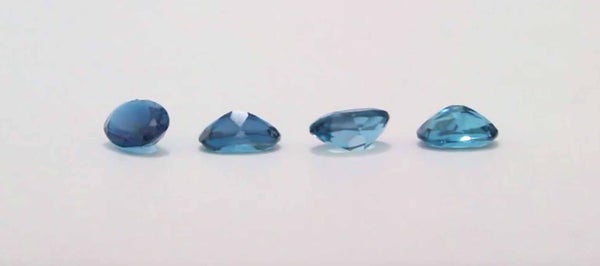This article was published in Scientific American’s former blog network and reflects the views of the author, not necessarily those of Scientific American
Worldwide voting for the 13thBest Illusion of the Year Contest will take place tomorrow, on the contest’s website, from 4pm EDT on October 4th to 4pm EDT on October 5th.
The Top 10 finalist illusions, selected from dozens of entries from all around the world, will be publicly revealed at that time!
The Best Illusion of the Year Contest, hosted by the Neural Correlate Society, is now an online competition: anybody with an internet connection (that means you!) can vote to pick the Top 3 Winners from the Top 10 finalists.
On supporting science journalism
If you're enjoying this article, consider supporting our award-winning journalism by subscribing. By purchasing a subscription you are helping to ensure the future of impactful stories about the discoveries and ideas shaping our world today.
The 1st place winning illusion will receive a $3,000 award, the 2nd place winner a $2,000 award, and the 3rd place winner a $1,000 award.
This year’s Contest coincides with the release of Champions of Illusion: The Science Behind Mind-Boggling Images and Mystifying Brain Puzzles. “Champions” features many of the best illusions from the Contest, and their neural underpinnings.

Credit: Champions of Illusion Book
Leading up to this year’s Contest, and to the release of Champions of Illusion, we have showcased here several honorable mentions from the current competition.
Our third and final Honorable Mention of 2017 is The Ghost Topaz, submitted by E. Gurdiel, E. Plerksophon and P. Katemake. Enrique Gurdiel received his BSc in physics from the University of Valladolid, Spain, and is a recent graduate of the “Colour in Science and Industry” (COSI) international master’s program, taught at the University of Granada, Spain.
The Ghost Topaz combines optical and visual illusion elements to great effect. Whereas optical illusions are based on the physical properties of light, visual illusions are a brain construct. An example of an optical illusion occurs when a straw appears bent inside of a drinking glass (due to the different refraction induces of air and water). An everyday occurrence of a visual illusion is when we see a dark afterimage smack on the middle of our visual field after looking at a bright lightbulb. In The Ghost Topaz, the optical illusion component comes from defects in the regular crystalline structure of topaz, while the visual illusion component is the apparent motion by which blue light seemingly travels from one gemstone to the next.
Gurdiel answered a few questions about his illusion submission (edited for clarity):
Illusion Chasers: How does The Ghost Topaz work, and what does it tells us about our mind and brain?
Gurdiel: Our illusion is a classic example of the apparent movement ‘class’ of visual illusions (which includes the so called ‘phi’ or ‘beta’ effects). The gemstones fade in color sequentially and independently, but we perceive the color as moving horizontally from stone to stone. Our brain connects the individual changes and we end up with the simpler perception of a single, integrated motion. The stones are carefully arranged to provoke this illusion, by taking advantage of the selective absorption that leads to the gemstones' color, as a function of the direction of polarization of light.
Illusion Chasers: Does The Ghost Topaz relate to any experiences we might have in our daily lives?
The apparent motion effect in The Ghost Topaz is similar to that in illuminated signs, when we perceive the letters moving in one particular direction. The light bulbs are actually switching on and off sequentially, and our brain creates the smooth continuous movement that we see.
Illusion Chasers: How did you discover The Ghost Topaz?
Gurdiel: My master’s thesis was on the instrumental and visual color assessment of electron-beam irradiated gemstones. I found the color and transparency of the gemstones to be dependent on the polarization of light and the position of the stone. This observation opened the possibility of creating an apparent motion illusion in which light would appear to travel from one gemstone to the next. After days of testing with different numbers of stones and positions, we arrived at the most effective presentation, which is now featured in the video.
My recent studies have centered on human visual perception, and particularly color. I took a very interesting course on "Human Perception,” taught in the University of Granada as part of the COSI master’s program. We covered many visual illusions during this course, and the instructors also told us about the Best Illusion of the Year Contest. At that point I was investigating the appearance of gemstones for my thesis, and I had also done some experiments with polarizers out of personal curiosity. I realized that I could create the perception of motion from these elements, and we worked to optimize the effect. I am also interested in music and video edition. The piano music in the video is one of my compositions.
